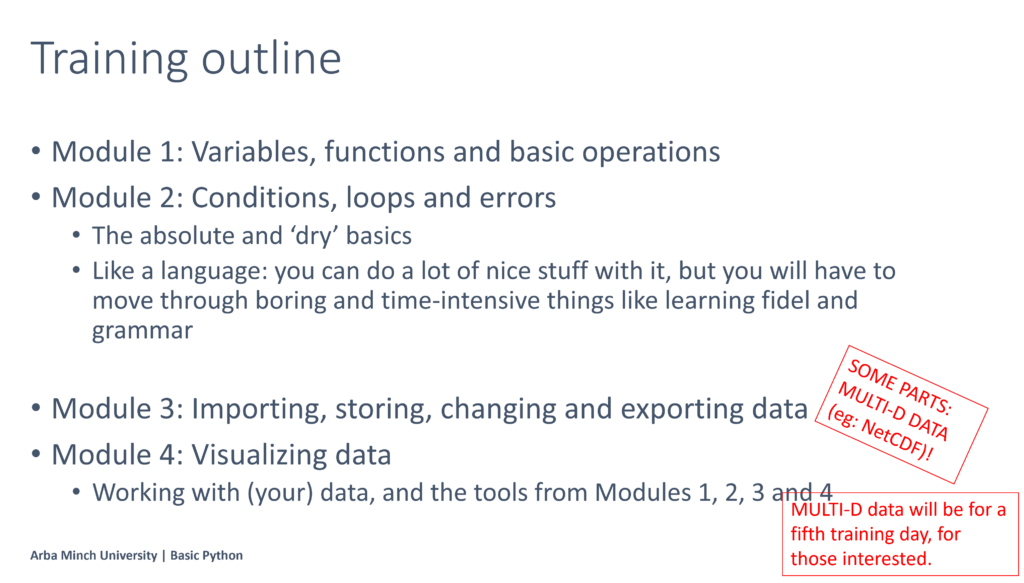Over a period of five weeks, I have offered a five-day Python training for environmental data processing. You can find the training materials on my OSF repository.
During the year 2020, I found myself with a lot of time (students were sent home due to corona) and data (during air pollution courses I offered, students collected data across 30 situations). I decided to spend my time on learning to use Python for data processing. [UPDATE: this resulted in data visualizations for an article about the students’ data collection.] To foster my newfound Python addiction, I decided to turn what I learned into a training for colleagues of the Arba Minch Water Technology Institute. This resulted in a ‘Basic Python for Environmental Data Processing’ training. The training ran from the absolute basics (variables, functions) up to data processing and visualization (Pandas, Matplotlib) and working with multidimensional data (NetCDF).

The training leaned heavily on lecture slides and participants simultaneously practicing on their own laptop. I offered four modules and one bonus-day, distributed over five weeks (one day per week). To keep groups small, I offered a singe module four times to four groups of participants. While the interest in Python appears to be high (48 participants at the start), the motivation to actively participate in all sessions lacks behind (17 participants followed all sessions). I will have to find out in future trainings whether that is something I can influence.

